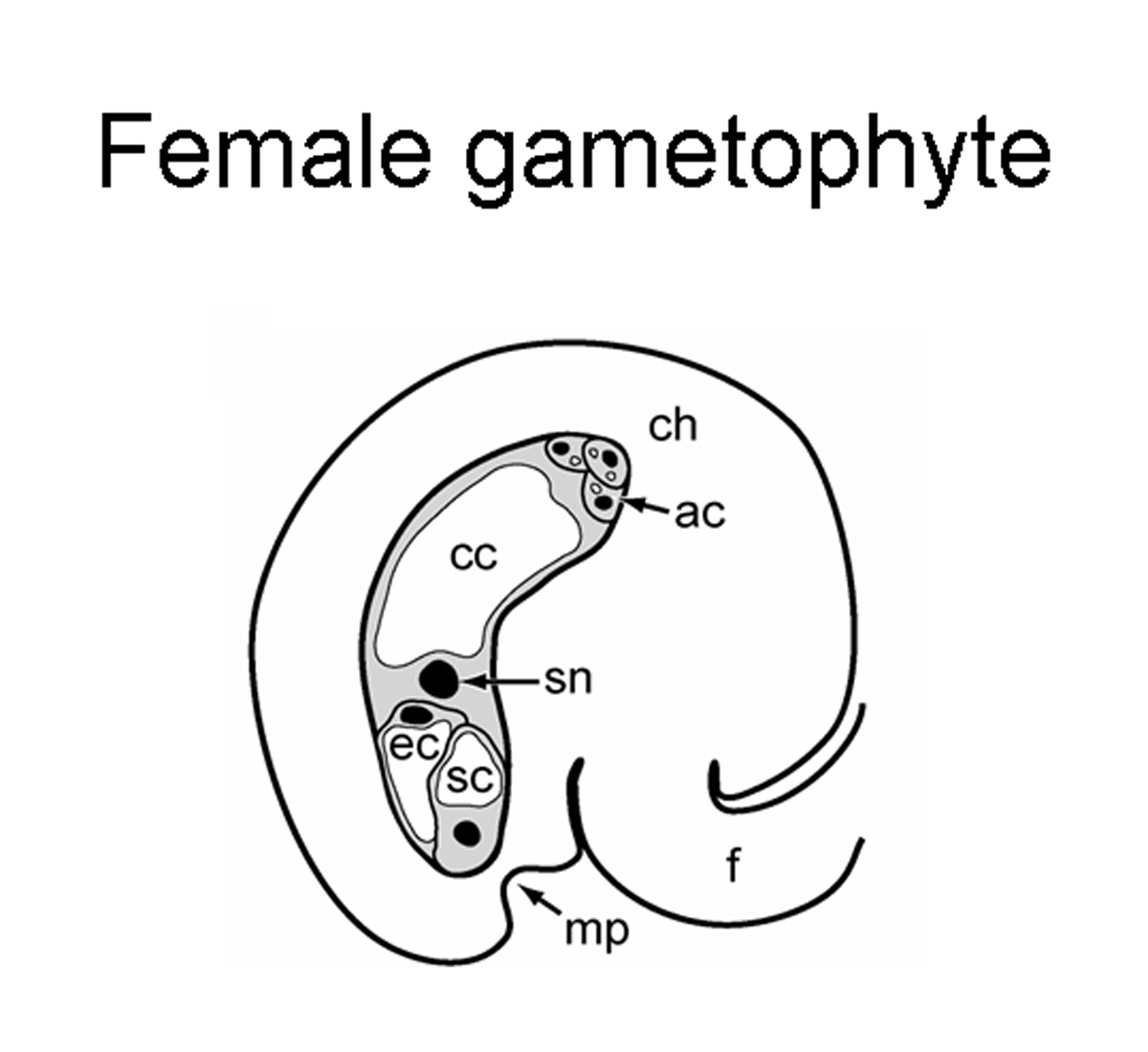
The gametophytes are essential to the angiosperm reproductive process. Sexual reproduction is initiated when pollen is transferred from anther to stigma. Shortly thereafter, a pollen tube emerges and grows great distances through the carpel’s internal tissues to deliver its two sperm cells to the female gametophyte. One sperm cell fertilizes the egg cell and gives rise to the seed’s embryo, and the second sperm cell fuses with the central cell and gives rise to the seed’s endosperm (5). Female gametophyte cells play roles in many steps of the fertilization process. During pollen tube growth, the synergid cells produce a guidance cue that directs pollen tube growth to the ovule (3, 4). Structural and genetic studies suggest that the synergid cells also contain factors that control arrest of pollen tube growth and release of pollen tube contents. Upon fertilization, the ovule is induced to develop into a seed; genetic studies indicate that the female gametophyte plays a role in maternal control of seed development. During seed development, the egg cell develops into the embryo and the central cell develops into the endosperm. Genetic and molecular studies indicate that central cell-expressed gene products control the activation and development of the endosperm (2). It is also likely that the egg cell contains factors regulating the activation and development of the embryo. With funding from The 2010 Project at the National Science Foundation, and in collaboration with Dr. Ramin Yadegari (Department of Plant Sciences, University of Arizona) and Dr. Gary Drews (Biology Department, University of Utah), we are working to uncover the gene regulatory networks controlling specification and differentiation of the female gametophyte during development (https://www.fastlane.nsf.gov/servlet/showaward?award=0520008). We are carrying out mRNA-based screens for female gametophyte-expressed genes based on comparative expression in normal ovules versus mutant ovules lacking female gametophytes. To build our regulatory networks, we are: (i) characterizing the expression of the female gametophyte-expressed genes (promoter/reporter constructs), (ii) determining whether these genes have functions during cell specification/differentiation or other female gametophyte processes (analysis of mutant lines in which the genes are disrupted), (iii) determining the positions of these genes relative to one another in the gene regulatory circuitry (analysis of gene expression patterns of the female gametophyte genes in the presence of mutations in each of the genes) and (iv) elucidating the gene-regulatory networks operating in these cells to establish direct connections between pairs of the genes (identifying DNA-binding sites, in vitro interactions and critical promoter elements). These studies will be important not only for understanding specification of the cells of the female gametophyte but also for understanding how these cells acquired their important reproductive functions. ________________________________ REFERENCES 1. Drews GN, Yadegari R. 2002. Development and function of the angiosperm female gametophyte. Annu Rev Genet 36: 99-124. 2. Gehring M, Choi Y, Fischer RL. 2004. Imprinting and seed development. Plant Cell 16 Suppl: S203-13. 3. Higashiyama T, Kuroiwa H, Kuroiwa T. 2003. Pollen-tube guidance: beacons from the female gametophyte. Curr Opin Plant Biol 6: 36-41. 4. Higashiyama T, Yabe S, Sasaki N, Nishimura Y, Miyagishima S. 2001. Pollen tube attraction by the synergid cell. Science 293: 1480-3. 5. Lord EM, Russell SD. 2002. The mechanisms of pollination and fertilization in plants. Annu Rev Cell Dev Biol 18: 81-105. 6. McCormick S. 2004. Control of male gametophyte development. Plant Cell 16 Suppl: S142-53. 7. Yadegari R, Drews GN. 2004. Female gametophyte development. Plant Cell 16 Suppl S133-41.
home | who we are | research | publications | tools | contact us |
